Table of contents
Radishes ( Raphanus sativus var. sativus) taste particularly good raw (and preferably in organic quality) as a snack or in salads, but can also be used cooked, fried or baked.
Use in the kitchen
Radishes ( Raphanus sativus var. sativus) are a variety of the garden radish ( Raphanus sativus) with rather small tubers (approx. 2-4 cm), but there are also larger varieties. The most well-known are round, red radishes. White, yellow, purple, black and multi-colored varieties are also possible, always with a white interior. The shape ranges from spherical to long oval. Are radishes spicy? The typical hot, spicy taste, which is due to the mustard oil they contain, is similar to that of radishes, but is a little more subtle. The spiciness depends on the variety and size, with smaller specimens tending to be hotter. If they are too spicy for you, you can reduce the spiciness with a pinch of salt.
Can you eat radishes raw? Radishes are often eaten raw and pure as a snack. Raw, they are suitable for salads (e.g. with apples, cucumbers, white cabbage, kohlrabi or potatoes), thinly sliced as a spread on bread (with a little margarine and salt), chopped in dips for raw vegetable sticks or as a garnish on cold, vegan aperitif platters. If you pickle raw radishes, they not only last longer, they also taste wonderful. The tubers can be used with garden cress and apple cider vinegar to make a fine salsa, which can be eaten with bread or used as a topping on potato dishes.
How else do you eat radishes? You can also steam, fry or bake the small storage tuber. Radishes steamed with herbs (e.g. parsley, chives or dill) make an excellent vegetable side dish. Baked potatoes, potato and vegetable pans also benefit from the spicy radish flavor. Vegan vegetable quiches can also be spiced up with them. Be sure to try the delicious, vegan okara and radish pan with white cabbage.
Can you eat radish leaves raw? Young, tender radish leaves are also edible. 1 Raw and cut into strips, they go well with salads. They also flavor stews and soups (e.g. radish leaf and spinach soup with quinoa and pumpkin seed topping) and can be made into a radish leaf pesto.
Vegan recipe for radish salad with apples and celery
Ingredients (for 4 people): 1 bunch of radishes (raw, organic), 2 apples, ½ bunch of celery, ½ bunch of green mint, 60 g walnuts, 1 organic lemon, 4 tbsp soy yoghurt, 2 tbsp rapeseed oil, 2 tsp mustard, a little salt andpepper.
Preparation: Wash the radishes, apples and celery. Cut the radishes and cored apples into thin slices and the celery sticks into thin rings. Rinse the green mint, shake dry and pick off the leaves. Roughly chop the walnuts. Rinse the lemon, grate the peel and squeeze out the juice. Mix the lemon peel, lemon juice, soy yoghurt, rapeseed oil and mustard to make a dressing and season with salt and pepper. Arrange the radishes, apples, celery and mint leaves in bowls and garnish with walnuts. Drizzle the vegan yoghurt dressing over the top and serve.
Vegan recipes with radishes (raw) can be found under the note: " Recipes that have the most of this ingredient ".
| Not only vegans or vegetarians should read this: Vegans often eat unhealthily. Avoidable nutritional errors. |
Purchasing - Storage
Radishes can be bought in supermarkets (e.g. Coop, Migros, Denner, Volg, Spar, Aldi, Lidl, Rewe, Edeka, Hofer, Billa) most of the year. Organic supermarkets (e.g. Denn's Biomarkt, Alnatura) also offer fresh radishes (in organic quality). You can find them either with leaves as a bunch of radishes or without leaves loose in small bags. The root vegetable is available regionally in the DA-CH countries from March to December, the outdoor season is from March to September. 2
When buying, look for plump, not wrinkled pieces and fresh, lush green leaves. This indicates that the roots are fresh. If you like spicy and hot food, you should go for small radishes.
The availability of radishes (raw) varies depending on the size of the store, catchment area, etc. You can find our recorded food prices for the DA-CH countries above under the ingredient image - and by clicking you can see their development at various suppliers.
Storage tips
Fresh radishes are best stored in the vegetable compartment of the refrigerator. Wrapped in a damp cloth, they will last for about a week. Leaves should be removed beforehand, as they draw moisture from the tubers and take away their crunchy consistency.
Ingredients - Nutritional values - Calories
What are the nutritional values of radishes? Raw radishes are very low in calories and fat, with 16 kcal and 0.1 g fat per 100 g. Carbohydrates (3.4 g/100g) and proteins (0.68 g/100g) are also present in small amounts.Dietary fiber is present at 1.6 g/100g. 3 The following are three important radish nutrients that occur in significant quantities.
100 g of raw radishes contain 15 mg of vitamin C (ascorbic acid), which is 19% of the daily requirement. This content is similar to that of parsnips (17 mg/100g) and summer squash (17 mg/100g). Yellow bell peppers contain significantly more vitamin C at 184 mg/100g. 3
Raw radishes contain 25 µg folate per 100 g (13% of the daily requirement). Horseradish (26 µg/100g) and zucchini (24 µg/100g) contain a similar amount of folate. Raw spinach contains 194 µg/100g, which is about eight times the amount of the vitamin. 3
Do radishes contain potassium? The potassium content is 233 mg/100g (12% of the daily requirement). Eggplants (229 mg/100g) and tomatoes (237 mg/100g) have a similar content. Unpeeled hemp seeds contain a particularly high amount of potassium at 1200 mg/100g. 3
Do radishes contain vitamins? In addition to vitamin C and folate, the storage tuber also contains small amounts of vitamin B6, riboflavin (vitamin B2) and pantothenic acid (vitamin B5). 3
Radish also contains significant amounts of bioactive ingredients, so-called secondary plant substances. These include flavonoids, polyphenols, terpenes, glucosinolates and anthocyanins. The leaves and sprouts contain particularly large amounts of these. 12
The complete ingredients of radishes (raw), the coverage of the daily requirement and comparison values with other ingredients can be found in our nutrient tables. In the article Nutrients explained you will get a detailed insight into the topic.
Effects on health
As a variety of the garden radish ( Raphanus sativus), the bioactive substances of radish and radishes and their health-promoting properties are comparable.
Are radishes healthy? The tubers contain glucosinolates and isothiocyanates (mustard oils), among other things. 4 Radish has anti-inflammatory, antimicrobial, antioxidant, antimutagenic and anti-cancer properties. 4,5,6 Studies also report on its antidiabetic effect and potential to reduce hyperlipidemia. 4,5 What are radishes good for? The bioactive compounds they contain are linked to counteracting diseases such as cancer, inflammation, liver damage and diabetes. 6
Are radishes healthy for losing weight? Due to their low energy content, radishes can be easily integrated into the diet of people trying to lose weight. Radishes are therefore a healthy way to lose weight. Read more about this in our article " Lose weight healthily and permanently ".
Dangers - Intolerances - Side effects
Like many other foods, radishes can cause allergic reactions in sensitive people. 7
Are too many radishes unhealthy? Too large quantities of radishes can irritate the digestive tract of sensitive people and cause flatulence and cramps. 10
Folk medicine - natural medicine
Extracts of radish (and radishes) have been used in folk medicine since ancient times to treat stomach problems, constipation, urinary tract infections, liver inflammation, heart problems and ulcers. 6
Ecological footprint - animal welfare
The CO2 footprint of a food depends on various factors. The type of agricultural production: conventional vs. organic, seasonal, regional, domestic production or import by truck, ship or plane, different types of packaging and whether the goods are fresh or frozen, all play a decisive role.
Radish, which belongs to the same species as radishes and is just a different variation with a larger tuber, has a carbon footprint of 0.2 kg CO 2 eq/kg (analysis conducted in Germany). 11 Vegetables have, on average, a very good or low carbon footprint (especially compared to animal products); among vegetables, root vegetables have a particularly good ecological balance. 14
In 2009, the FiBL (Research Institute of Organic Agriculture) in Austria carried out life cycle analyses of various organic products and compared them with conventional equivalents. Conventional radishes emitted 0.124 kg CO 2 eq/kg, while regional organic radishes emitted 0.079 kg CO 2 eq/kg – a savings potential of 37%. 1
Researchers in Korea used a life cycle analysis to calculate the different water consumption of white radish over the year. The water footprint was 20.74 - 26.68 l/kg (irrigation or 'blue water') depending on the season. 13 (Korea is in the temperate climate zone with four seasons.) The global average for vegetables is 43 l/kg of blue water (total consumption is 240 l/kg); for root vegetables it is 16 l/kg (total: 830 l/kg). Other crops use four times as much: for example, tobacco needs 205 l of fresh water per kg (total: 2925 l/kg). 15
For detailed explanations of various sustainability indicators (such as ecological footprint, CO2 footprint, water footprint), see our article: What does the ecological footprint mean?
Worldwide occurrence - cultivation
The radish ( Raphanus sativus var. sativus) is a variety of the cultivated plant garden radish ( Raphanus sativus). The species name sativus means cultivated/bred in Latin. It is not clear from which wild form radish originates. One assumption is that Raphanus sativus arose in the Mediterranean region through natural or artificial cross-breeding between Raphanus landra and Raphanus maritimus. Another assumption is that four wild species ( R. raphanistrum, R. maritimus, R. landra and R. rostras) were involved in the origin of the radish. 8
Radishes were first cultivated around the turn of the century. Today they are grown in temperate regions of Europe, the USA and even in the Arctic. 5
Growing your own
Radishes can be grown well in your own garden in a sunny, airy location or in a greenhouse. They prefer light to medium-heavy, humus-rich soil. 9
From the end of February, early radish varieties are sown in a cold frame or greenhouse, and from March, as soon as the ground is frost-free, directly outdoors. Sowing can take place until the beginning of September. Leave 3-5 cm of space between the seeds and sow them only 1 cm deep. Radish seeds germinate best at temperatures of 12 to 15 °C. If the seedlings grow too close together, they can be spaced 5 to 8 cm apart. 9
Radishes need regular water, especially in dry and hot weather. Too little water encourages woody and sharp roots. Fertilizers are not necessary if the previous crop is well fertilized and the soil is loosened. The soil can be kept loose by hoeing occasionally, which helps the root vegetable thrive. 9
Radishes grow particularly quickly in summer, and harvesting can begin three to four weeks after sowing. In spring and autumn, the tubers take a little longer - they are ready for harvest after eight weeks. They should be harvested within ten days, and in summer within four days, otherwise they become furry (woody). 9
Further information
The radish ( Raphanus sativus var. sativus), a variety of the garden radish ( Raphanus sativus), belongs to the cruciferous family (Brassicaceae). There are various types of radish that differ in color, shape, size and when they are grown. The white, cone-shaped variety "Icicle" is a traditional and extremely popular variety. 9
How much does a radish weigh? The weight of a radish depends on the variety. On average it weighs between 10 and 20 grams.
Alternative names
Radishes (incorrectly spelled Radischen) are also called radishes or, more rarely, monthly radish.
Its Latin name is Raphanus sativus var. sativus or Raphanus sativus ssp. sativus, but sometimes simply Raphanus sativus.
In English, radishes, like garden radishes, are called radish.
Bibliography - 15 Sources (Link to the evidence)
| 1. | FiBL Österreich. CO2-Fussabdruck von Bioprodukten. Ergebnisse Gemüse. 2009. |
| 2. | Gemuese ch: Radieschen. |
| 3. | USDA United States Department of Agriculture. |
| 4. | Banihani SA. Radish (Raphanus sativus) and Diabetes. Nutrients. 2017;9(9):1014. |
| 5. | Curtis IS. Genetic engineering of radish: current achievements and future goals. Plant Cell Reports. 2011;30(5):733–744. |
| 6. | Manivannan A, Kim JH, Kim DS, Lee ES, Lee HE. Deciphering the Nutraceutical Potential of Raphanus sativus - A Comprehensive Overview. Nutrients. 2019;11(2):402. |
| 7. | Labor-augsburg-mvz de: Einzelallergene Radieschen. |
| 8. | Kaneko Y, Kimizuka-Takagi C, Bang SW, Matsuzawa Y. Radish. In: Kole C (Hg.) Vegetables. Springer Verlag: Berlin, Heidelberg; 2007: 141–160. |
| 9. | Mein-schoener-garten de: Radieschen - Raphanus sativus var. sativus. |
| 10. | Technische Universität München. Essen und Trinken bei Blähungen (Meteorismus und Flatulenz). |
| 11. | Reinhardt G, Gärtner S, Wagner T. Ökologische Fussabdrücke von Lebensmitteln und Gerichten in Deutschland. IFEU Institut für Energie - und Umweltforschung Heidelberg. 2020. |
| 12. | Gamba M, Asllanaj E et al. Nutritional and phytochemical characterization of radish (Raphanus sativus): A systematic review. Trends in Food Science & Technology. 2021;113:205–218. |
| 13. | Cha K, Son M, Hong S, An S, Part S. Method to assess water footprint, a case study for white radishes in Korea. International Soil and Water Conservation Research. 2017;5(2):151–157. |
| 14. | Poore J, Nemecek T. Reducing food’s environmental impacts through producers and consumers. Science. 2018;360(6392):987–992. |
| 15. | Mekonnen MM, Hoekstra AY. The green, blue and grey water footprint of crops and derived crop products. Hydrol. Earth Syst. Sci. 2011;15:1577-1600. |

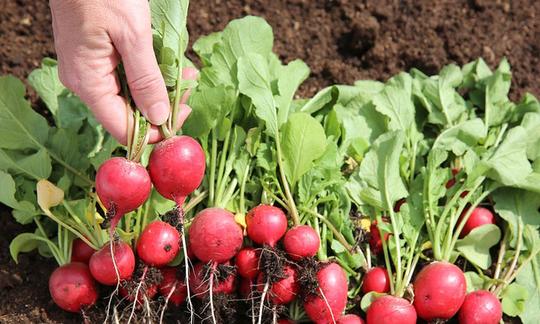

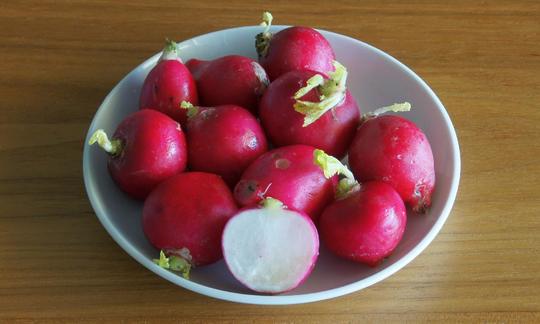

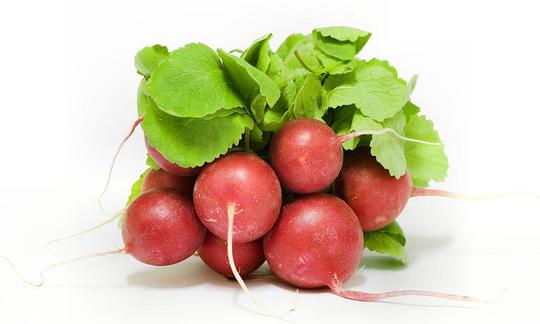

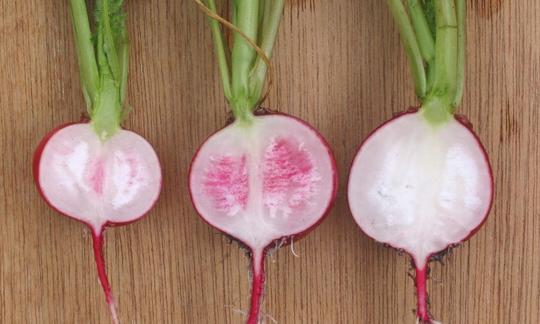

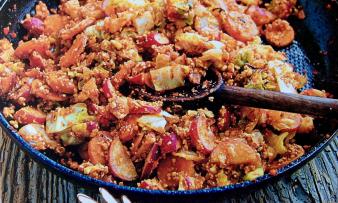
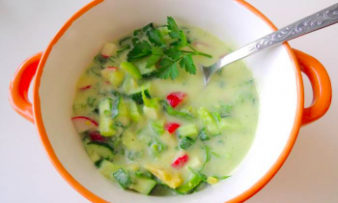
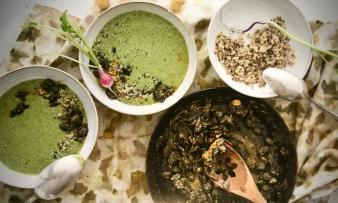





Comments